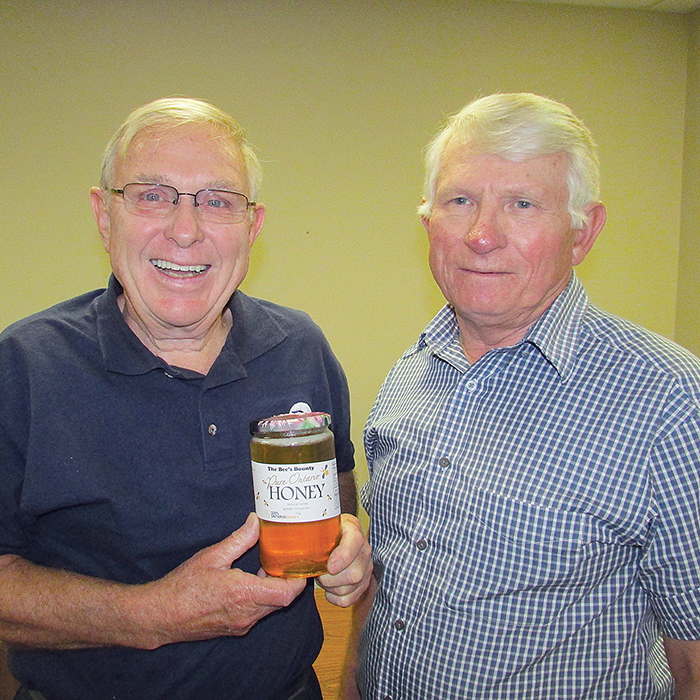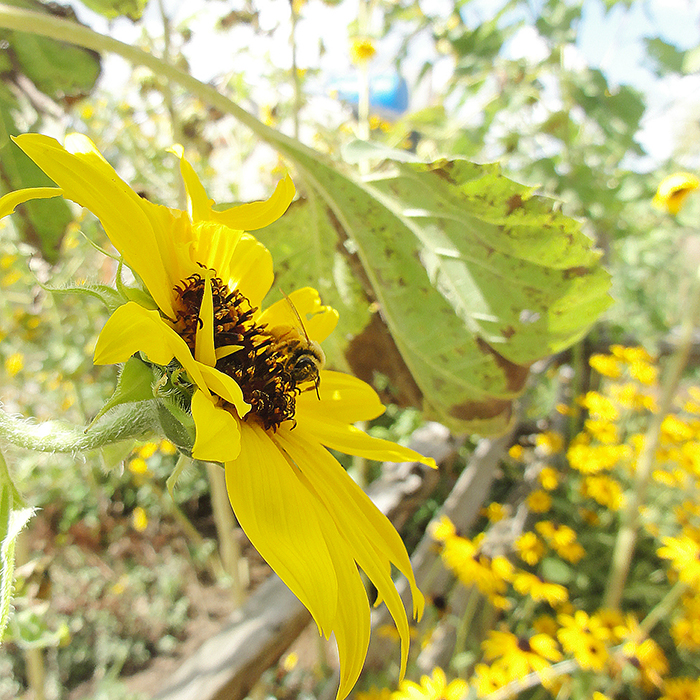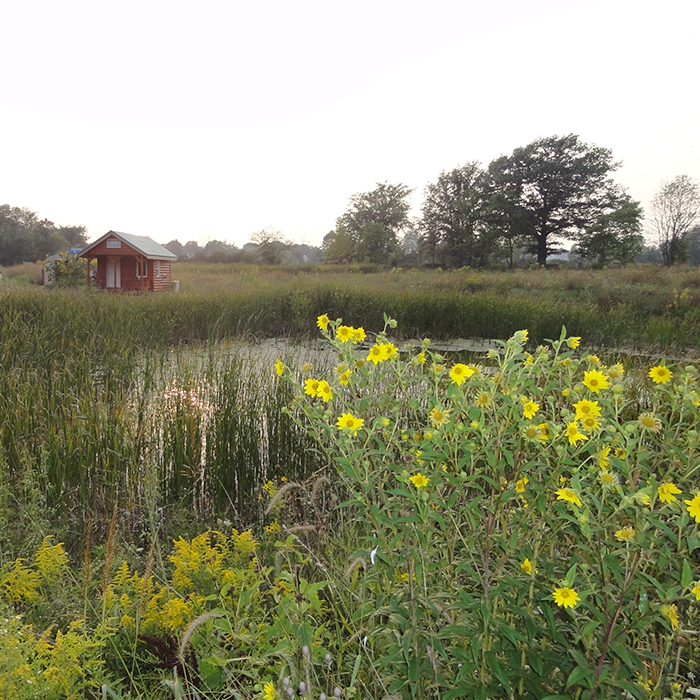
Chathamites Gary and Marilyn Eagleson have created their natural Carolinian paradise, but something was missing; the familiar buzz of a certain busy insect.
A friend suggested last year they should get bees. That was six hives ago.
Chatham Mazda from Chatham Voice on Vimeo.
It’s an excellent addition, as Dan and Steve Sinasac delivered bee colonies to the Eagleson’s 58-acre piece of woodlot and tall-grass prairie near Florence this past spring.
The Eaglesons purchased the land in 2006 and have worked to return it all to nature. When they bought the property, about 40 acres contained young Carolinian growth forest, while another 18 was still used for farming.
Work with the St. Clair Region Conservation Authority and the Rural Lambton Stewardship Network has turned most of the farmland back into wildlife habitat. It’s now a mix of woodlot and the aforementioned tall-grass prairie. And it’s getting attention.
Earlier this year, the Eaglesons were recognized for their efforts, being named recipients of the 2015 woodlot management award from the Lambton Woodlot Owners’ Association.
 The land straddles the Fansher Creek, which feeds into the Sydenham River.
The land straddles the Fansher Creek, which feeds into the Sydenham River.
The Sinasacs jumped at the chance to bring bees to the property. For Dan, who lives near Wabash between Dresden and Thamesville, it was a natural extension of his recent foray into beekeeping locally. His brother Steve, also a beekeeper, lives in Hamilton.
“My brother is the bee expert. He belongs to a bee club,” Dan said. “Counting my nine, he has 31 hives all together.”
Dan’s been at it for about three years now, he said.
“I live out in the country and do some gardening. I got a hive about three years ago,” he said. “The next year, I ended up with two hives.”
He now has three, and Dan said he wound up with about six queens this spring, as he checked his hives over. He kept four of them, and his brother brought down additional queens.
“In the spring, you take the hives apart and check them over for queen cells. If you get more than one queen in a hive, they don’t get along too well,” Dan said. “So we put the queen cell in a new box, with bee frames on either side.”
Suddenly, Gary had six hives go up on his property.
 Two months later, they put the grouping in a larger box, and the bees “went out and did their thing,” Dan said.
Two months later, they put the grouping in a larger box, and the bees “went out and did their thing,” Dan said.
The mix of trees, including nut trees, and tall-grass prairie that has various flowers blooming all season long, is excellent bee territory, he added.
“The nice thing over at Gary’s place is he has a lot of lowers, fruit trees and nut trees. They (bees) pollinate them all,” he said.
Gary said the bees fit right in with his Carolinian efforts.
“This helps what I’m doing. I have blackberries, raspberries, fruit trees. It helps with the symbiotic relationship. This is a very balanced ecosystem concept,” he said. “In a tall grass prairie, there’s so much biodiversity, you get blossoms the entire summer. Nine years ago, that was a hay field. Nature takes over very quickly.”
The bees lived up to their busy reputation, he said, as they went to work right away.
“In the spring, the trees did very well. As far as the bee association, I’ve noticed an increase in the productivity of my fruit-based crops,” Gary said.
That productivity on his plants means the bees are also being very productive in their homes. Dan said a healthy beehive can have upwards of 60,000 bees in it.
“They can make a lot of honey.”
Harvesting that honey can be difficult work, as a hive box – only one part of the overall hive, weighs about 35 pounds when its honeycombs are full, he added.
Many other many beekeepers around North America have suffered steep declines in their bee populations. Some have had entire hives die off. People often point to neoncotinoid insecticides, used by many farmers, as the cause. Dan said he’s been fortunate.
“I try to keep my bees around trees, where you don’t get the drift from the neoncotinoid,” he said.
In the meantime, Chatham-Kent recently received a 5-bloom rating from the International Communities in Bloom (CiB) competition, but was also recognized as being Canada’s best buddy when it comes to bees.
The municipality won the Most Pollinator-Friendly Community award.
According to local CiB officials, we got the nod due to the great number of pollinator-friendly gardens, tall-grass prairie plantings such as the Eagleson’s, and extensive naturalized areas, again just like the Eaglesons have done.
Admittedly, the property is just outside of Chatham-Kent.
Still, Gary thinks local farmers can do better.
“We can’t push the envelope constantly like we are doing in Chatham-Kent. There has to be a balance. You can’t fight nature constantly,” he said.
On his own property, Gary didn’t just declare a truce, but rather let Mother Nature rule.
The bees have been so busy and so successful, Gary said they may double the number of hives next year. And he knows that will benefit more than just his property.
“Pollinators are crucial to the fruit and vegetable production here.”
Anyone looking for a taste of what Dan and Steve’s bees have made can contact Dan at 519-692-4657. They sell the amber liquid by the kilogram.








Nice! Not just the bees are busy in #ChathamKent!
Interesting article, nice pics
interesting article……..good for you Dan
Sweet deal Gary & Dan!
CiB & CK had nothing to do with it
To purchase honey from Dan Sinasac near Thamesville and Wabash call 519-692-4657